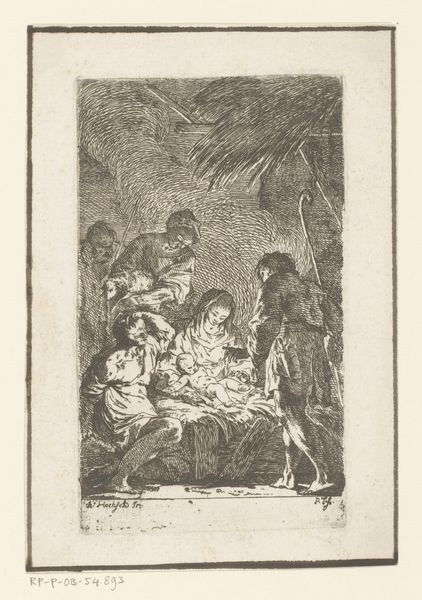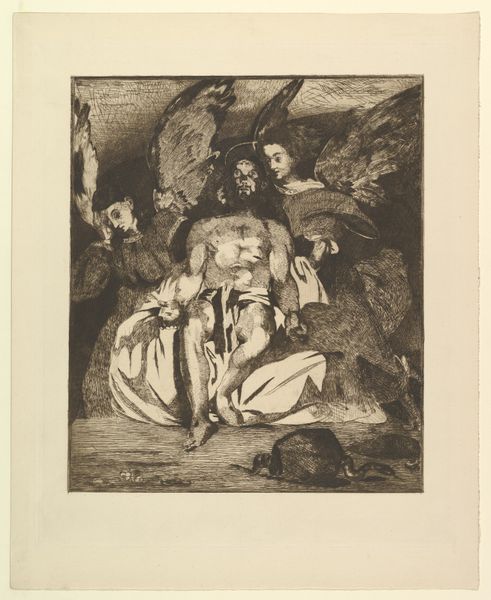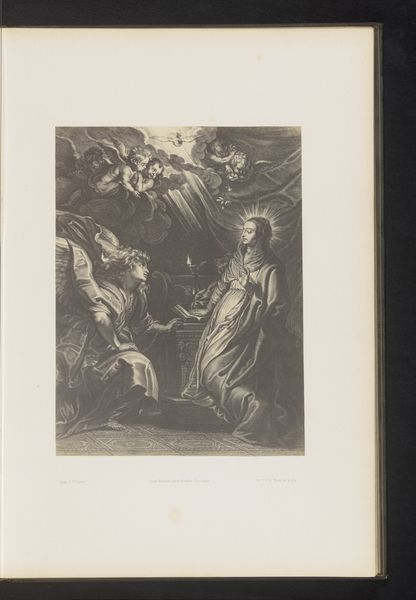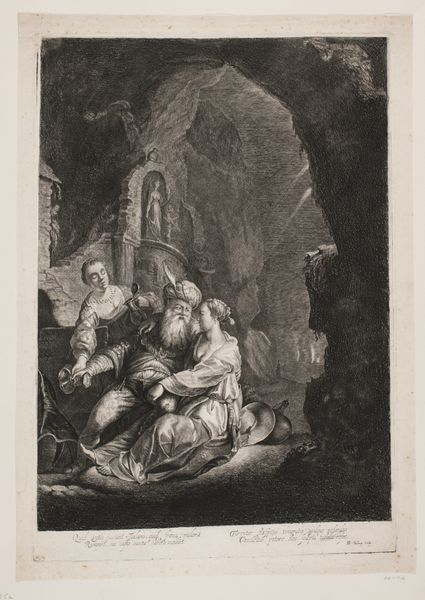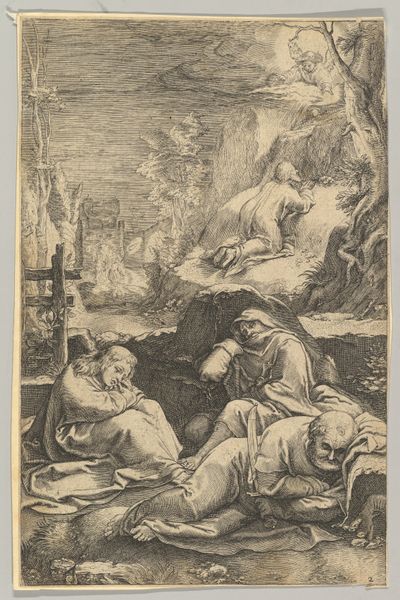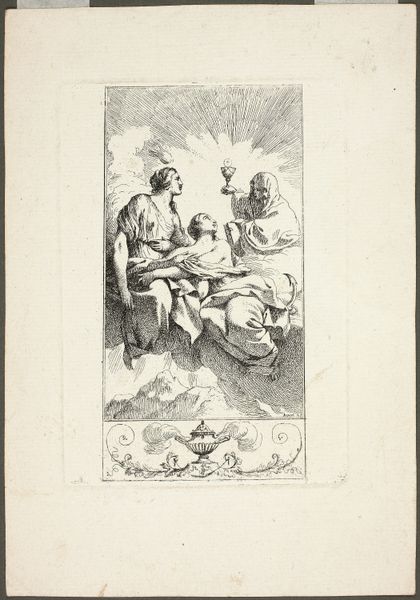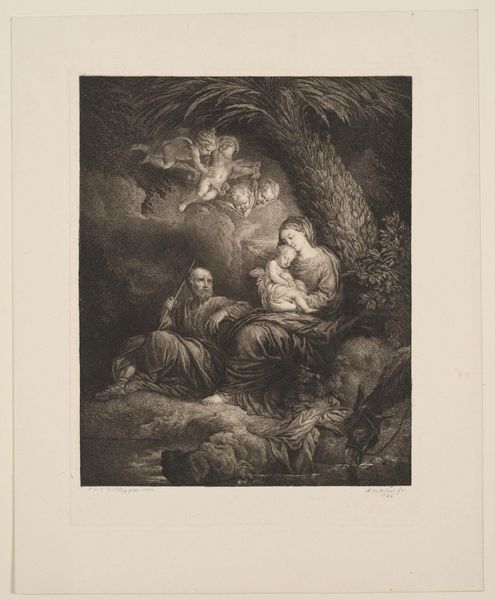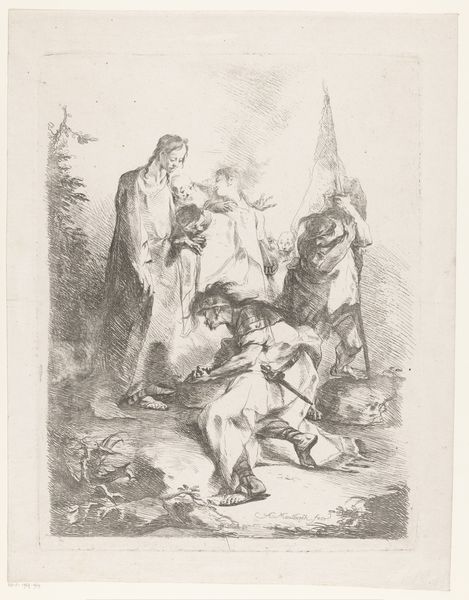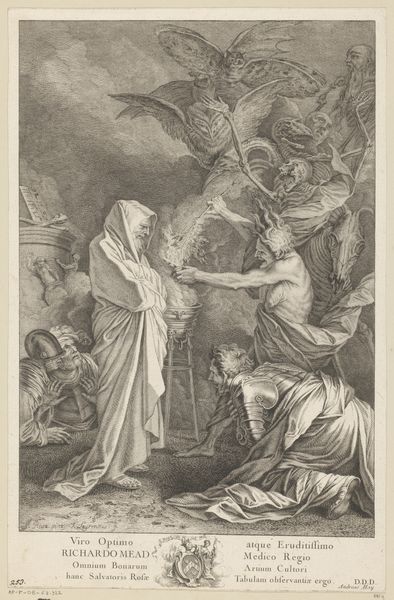
print, engraving
#
narrative-art
#
baroque
# print
#
old engraving style
#
landscape
#
figuration
#
history-painting
#
engraving
Dimensions: height 185 mm, width 144 mm
Copyright: Rijks Museum: Open Domain
Editor: Here we have Christian Wilhelm Ernst Dietrich's "Flight into Egypt," an engraving from between 1722 and 1774. The tones are quite subdued, which makes the central figures almost glow. It has such an interesting texture too, created from the engraving itself. How do you interpret the relationship between the figures and the landscape in this work? Curator: I observe a compelling contrast in textures and tonal values. Consider the almost luminous figures contrasted with the densely worked background. The composition is carefully structured. Note how the darker foliage serves as a backdrop, effectively pushing forward the figures of Mary, the Christ child, and Joseph. The very texture of the engraving lends an almost tangible quality to the folds of drapery. It's a visual rhetoric designed to engage the viewer with both the tangible and ethereal. Editor: So, the contrast isn’t just representational but actively contributing to the narrative? Curator: Precisely. Think of it as a study in contrasts—the light emanating from the holy figures against the dark, perhaps foreboding, forest. It enhances the drama of the flight, yes? It brings focus to what’s central and sets off that center using a very deep ground. It may encourage, therefore, close visual analysis on how such choices impact meaning. Editor: That’s fascinating. I hadn’t considered the forest's darkness contributing so directly to the tension. Thanks for highlighting that! Curator: Indeed. Engaging with art in this manner sharpens our understanding of the artistic intent through a visual vocabulary. The focus, then, remains on the artist’s choices within the image.
Comments
No comments
Be the first to comment and join the conversation on the ultimate creative platform.

